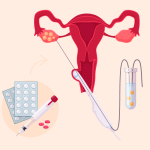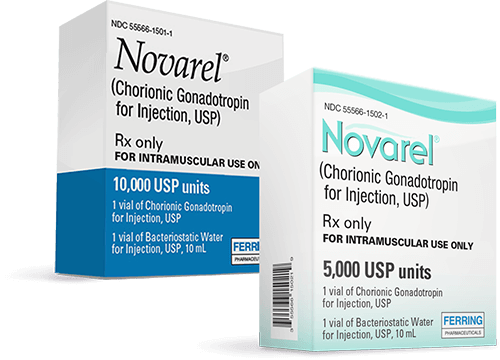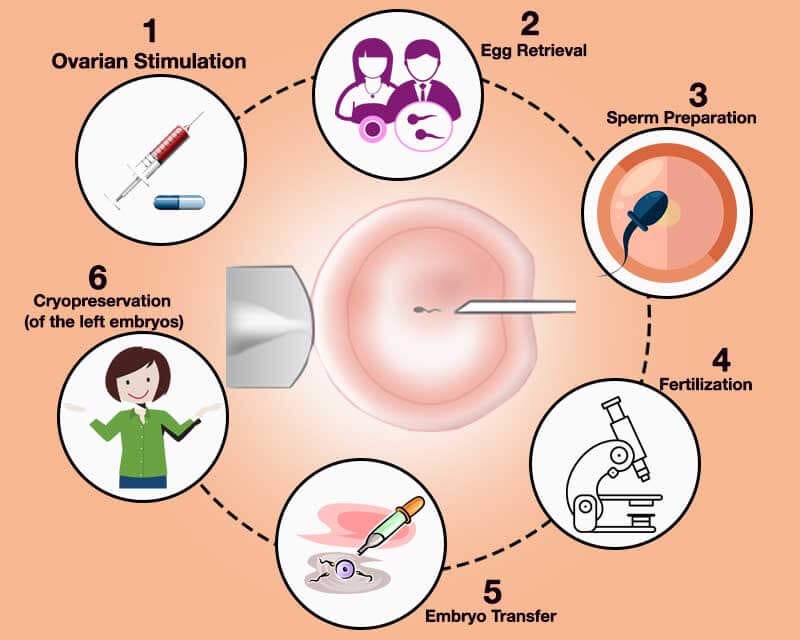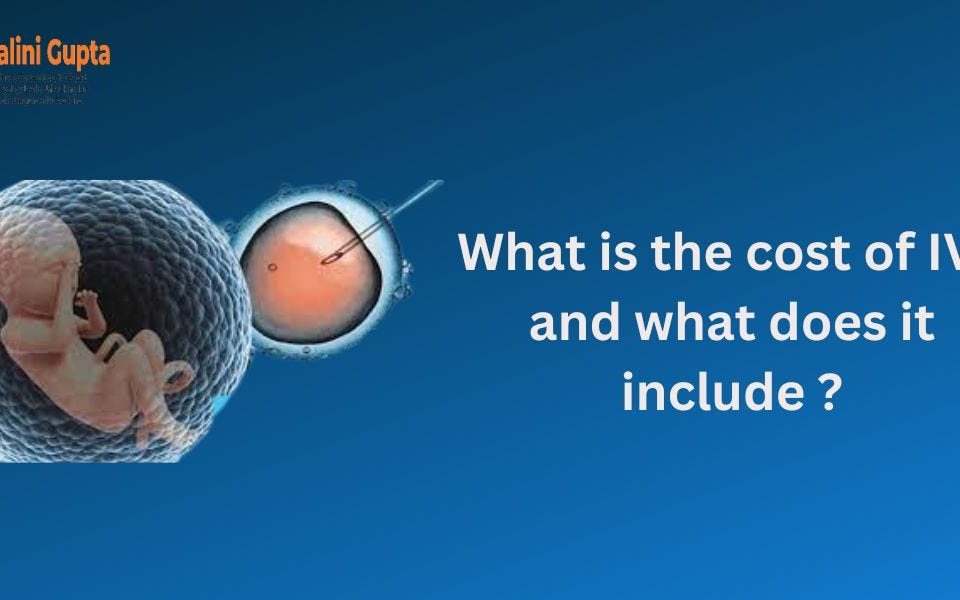
Does a Doctor Perform Egg Retrieval for IVF in Georgia?
April 19, 2025
Does IVF Freeze Eggs or Embryos? Your Ultimate Guide to Understanding the Process
April 19, 2025Can You Do IVF If Your Tubes Are Tied?
If you’ve had your tubes tied and are now dreaming of growing your family, you might be wondering if it’s still possible to get pregnant. The good news? Yes, you absolutely can—thanks to in vitro fertilization (IVF). This life-changing option has helped countless women bypass the roadblock of tied fallopian tubes and welcome a baby into their lives. But how does it work? What should you expect? And what else do you need to know before diving in? Let’s explore everything you need to know about IVF after tubal ligation in a way that’s easy to follow and packed with practical insights.
Why Tubal Ligation Doesn’t Mean the End of Your Fertility Journey
Tubal ligation—often called “getting your tubes tied”—is a permanent birth control method where the fallopian tubes are cut, tied, or blocked to stop eggs from reaching the uterus. It’s super effective at preventing pregnancy naturally, with a success rate of over 99%. For many women, it’s a choice made when they feel their family is complete. But life has a funny way of surprising us. Maybe you’ve remarried, lost a child, or simply had a change of heart. Whatever the reason, tubal ligation doesn’t have to be the final chapter of your fertility story.
Here’s the key: IVF sidesteps the fallopian tubes entirely. Normally, the tubes are like highways where sperm and egg meet up for fertilization. When they’re tied, that highway is closed. IVF, though, takes a different route. It brings the egg and sperm together in a lab, then places the resulting embryo directly into your uterus. No tubes needed! This makes it a game-changer for women who’ve had tubal ligation but want another shot at pregnancy.
How IVF Works When Your Tubes Are Tied
IVF might sound high-tech, but it’s pretty straightforward once you break it down. Here’s a step-by-step look at how it works, tailored to someone with tied tubes:
- Ovarian Stimulation: You’ll take fertility drugs (usually injections) to encourage your ovaries to produce multiple eggs. Normally, you release one egg a month, but IVF boosts that number to increase your chances.
- Egg Retrieval: Once your eggs are ready, a doctor uses a thin needle guided by ultrasound to collect them from your ovaries. This quick procedure happens under light sedation, so you won’t feel a thing.
- Fertilization: In a lab, your eggs meet your partner’s (or a donor’s) sperm. Sometimes, a single sperm is injected into an egg (called ICSI) to ensure fertilization happens.
- Embryo Growth: The fertilized eggs grow into embryos over a few days. Lab experts keep an eye on them to pick the healthiest ones.
- Embryo Transfer: A doctor places one or more embryos into your uterus using a thin tube. If all goes well, an embryo implants, and you’re on your way to pregnancy!
Since your fallopian tubes are out of the picture, IVF doesn’t care if they’re tied, blocked, or even removed. The process happens outside your body until the embryo is ready to settle into your uterus. Pretty cool, right?
Does Tubal Ligation Affect IVF Success?
You might be wondering if having your tubes tied changes how well IVF works. The short answer: not really. Studies show that women who’ve had tubal ligation have IVF success rates similar to women with open tubes who are dealing with other fertility issues. For example, a 2015 study from Western Australia found that women with prior tubal sterilization had a 31% live birth rate per IVF cycle—almost identical to the 34% rate for other subfertile women. Age, egg quality, and overall health play a much bigger role in your odds than the state of your tubes.
IVF vs. Tubal Reversal: Which Is Right for You?
When you’re thinking about pregnancy after tubal ligation, you’ve got two main options: IVF or tubal reversal surgery. Both can work, but they’re totally different paths. Let’s compare them so you can figure out what fits your life best.
What’s Tubal Reversal?
Tubal reversal is a surgery to reconnect your fallopian tubes, aiming to let natural conception happen again. It’s a bigger operation than the original ligation, often requiring a 4-6 inch incision and a few weeks of recovery. Success depends on factors like how much tube is left, your age, and how the ligation was done (clips are easier to reverse than cuts or burns).
- Pros:
- ✔️ Natural pregnancy possible—no needles or labs needed.
- ✔️ One-time cost (usually $5,000-$10,000).
- ✔️ No extra birth control needed after you’re done having kids.
- Cons:
- ❌ Major surgery with longer recovery.
- ❌ Risk of ectopic pregnancy (when the embryo implants in the tube).
- ❌ Success isn’t guaranteed—rates drop with age or tube damage.
How IVF Stacks Up
IVF, on the other hand, skips surgery altogether. It’s less invasive, with no cutting or stitching, and you’ll know within weeks if it worked.
- Pros:
- ✔️ Bypasses tubes completely—no need to fix them.
- ✔️ Faster timeline (a cycle takes about 2 months vs. months of trying after reversal).
- ✔️ Lower ectopic pregnancy risk.
- Cons:
- ❌ Higher cost per cycle ($12,000-$20,000, depending on location and extras).
- ❌ Requires injections and multiple doctor visits.
- ❌ Chance of multiples (twins or more) if more than one embryo is transferred.
Making the Choice
Think about your priorities. If you’re over 35, IVF often has better odds because age affects egg quality more than tube repair. If money’s tight, reversal might seem appealing upfront, but if it fails, you could end up doing IVF anyway. Talk to a fertility specialist—they can look at your specific case (like how your tubes were tied) and give you a personalized nudge in the right direction.
Quick Quiz: Which sounds more like you?
- A) “I want to avoid surgery and get results fast.” (IVF might be your pick!)
- B) “I’d love to conceive naturally and keep costs low.” (Reversal could be worth a shot.)
What to Expect: Your IVF Journey After Tubal Ligation
Starting IVF can feel like stepping into the unknown, but knowing what’s ahead can ease the nerves. Here’s a peek at the emotional and physical ride, plus some tips to make it smoother.
The Emotional Rollercoaster
IVF is exciting but stressful. You might feel hopeful one day and anxious the next, especially during the “two-week wait” after embryo transfer when you’re waiting to test. It’s normal! One mom, Sarah, who had IVF after her tubes were tied, shared, “I cried when I saw my embryos on the screen, then panicked every day until the test. Having a support buddy helped me stay sane.”
- Tip: Find a friend or online group to vent to. You’re not alone in this!
The Physical Side
The injections sting a bit, and you might feel bloated or tired from the hormones. Egg retrieval is quick (15-20 minutes), but you’ll need a day to rest after. Transfer day is easy—no sedation, just a full bladder and a comfy chair.
- Tip: Stock up on cozy socks and your favorite snacks for recovery days. Comfort is key!
Timeline Breakdown
- Week 1-2: Meds to grow eggs.
- Week 3: Egg retrieval.
- Week 4: Embryo transfer.
- Week 6: Pregnancy test.
Most women say the process flies by once it starts. You’re busy with appointments, and before you know it, you’re waiting for that big result.
Busting Myths About IVF After Tubal Ligation
There’s a lot of chatter out there about IVF and tied tubes. Let’s clear up some common misconceptions with facts.
- Myth #1: “IVF won’t work because my tubes are tied.”
- Truth: Tied tubes don’t affect IVF success. The tubes aren’t part of the process—your ovaries and uterus are the stars here.
- Myth #2: “I’m too old for IVF after tubal ligation.”
- Truth: Age matters more than the ligation. Women in their 20s and 30s have higher success rates (up to 40-50% per cycle), but even in your early 40s, it’s possible with good eggs or donor help.
- Myth #3: “IVF always means twins or triplets.”
- Truth: Not anymore. Doctors often transfer just one embryo to avoid multiples, though twins happen in about 20-25% of cases if two are transferred.
Hidden Factors That Could Affect Your IVF Success
While tied tubes don’t mess with IVF, other things might. Here are three factors that don’t get enough attention but could make a difference—and what you can do about them.
1. Hydrosalpinx: The Silent Trouble-Maker
Sometimes, tied tubes can fill with fluid (called hydrosalpinx), which can leak into the uterus and lower IVF success. A 2021 study found that women with hydrosalpinx had pregnancy rates drop by up to 50% unless it was treated.
- Fix It: Ask your doctor for an ultrasound or HSG test to check for fluid. If it’s there, a quick surgery to remove or drain the tube can boost your odds.
2. Your Uterus’s “Welcome Mat”
Even with perfect embryos, implantation can fail if your uterine lining isn’t ready. Things like scar tissue from past surgeries or thin lining from hormone issues can play a role.
- Fix It: A hysteroscopy (a camera peek inside your uterus) can spot problems. Meds like estrogen or even a mock cycle might prep your lining better.
3. Sperm Quality Sneaking In
If your partner’s sperm count or motility is low, fertilization could stumble. This isn’t about your tubes, but it’s a big deal for IVF.
- Fix It: A sperm analysis before starting can catch this. If needed, ICSI (injecting sperm into the egg) can save the day.
Costs and Coverage: What You’ll Pay for IVF
IVF isn’t cheap, but it’s not always as bad as it sounds. Here’s the breakdown:
- Average Cost: $12,000-$15,000 per cycle in the U.S., plus $3,000-$5,000 for meds. Add-ons like genetic testing or freezing embryos bump it up.
- Insurance: Only 19 states mandate some fertility coverage, and even then, it varies. Tubal ligation might not qualify you for extra help since it’s not “infertility” in the classic sense.
- Savings Hacks:
- Look for clinics with package deals (some offer multi-cycle discounts).
- Check grants like Baby Quest or CNY Fertility’s programs.
- Ask about mini-IVF—it uses less meds and can cut costs by 30-50%.
Poll: How much are you willing to spend on IVF?
- A) Under $10,000
- B) $10,000-$20,000
- C) Whatever it takes!
Real Stories: IVF Success After Tied Tubes
Hearing from others can make this feel less daunting. Meet two women who’ve been there:
- Jenny, 34: “I had my tubes tied after my second kid, but then I met my new husband. IVF gave us our little boy in 2023. It was pricey, but worth every penny.”
- Maria, 39: “Reversal didn’t work for me—too much scarring. IVF was my Plan B, and I’m due next month. The shots were rough, but seeing that heartbeat made it fade away.”
These stories show it’s not just possible—it’s personal. Your journey might look different, but the destination can be the same.
Boosting Your IVF Odds: Tips You Won’t Find Everywhere
Want to stack the deck in your favor? Here are some under-the-radar ideas based on the latest buzz and research:
- Ditch the Stress: A 2023 study linked high stress to lower IVF success. Try yoga or meditation—10 minutes a day could make a difference.
- Vitamin D Check: Low levels are tied to poorer outcomes. Get a blood test; if you’re low, a supplement might help.
- Freeze Ahead: If you’re not ready now, freeze your eggs before your ligation. Younger eggs = better chances later.
What’s New in 2025: IVF Trends to Watch
IVF tech is always evolving. Here’s what’s hot this year that could impact your journey:
- AI Embryo Selection: Clinics are using artificial intelligence to pick the best embryos, upping success rates by 10-15%, per early data.
- At-Home Monitoring: Some places now offer kits to track your hormone levels yourself, cutting down on visits.
- Frozen Embryo Boost: More docs are freezing all embryos and transferring later when your body’s calmer—studies hint at higher pregnancy rates this way.
Your Next Steps: Getting Started with IVF
Ready to take the plunge? Here’s how to kick things off:
- Find a Specialist: Look for a reproductive endocrinologist with experience in post-ligation IVF. Check reviews or ask for referrals.
- Get Tested: You’ll need bloodwork, an ultrasound, and maybe a sperm check for your partner.
- Plan Your Budget: Call your insurance and the clinic to nail down costs. Save up or explore financing.
- Ask Questions: Write down stuff like “Will my tied tubes cause issues?” or “What’s my success rate at my age?”
Checklist: Before your first appointment, have:
- ✔️ Medical history (including how your tubes were tied).
- ✔️ List of meds you’re on.
- ✔️ Questions about timeline and costs.
The Bigger Picture: Why IVF Matters
IVF after tubal ligation isn’t just about science—it’s about hope. It’s a chance to rewrite your story, whether you’re 28 or 42, single or partnered. Sure, it’s got challenges (needles, bills, waiting), but it’s also got miracles. Over 12 million babies have been born worldwide through IVF since 1978, and that number’s climbing every day. Your tied tubes? They’re just a detour, not a dead end.
So, can you do IVF if your tubes are tied? Absolutely. It’s not only possible—it’s a proven path to parenthood for thousands of women just like you. Take a deep breath, talk to a doc, and see where this road takes you. You’ve got this!




